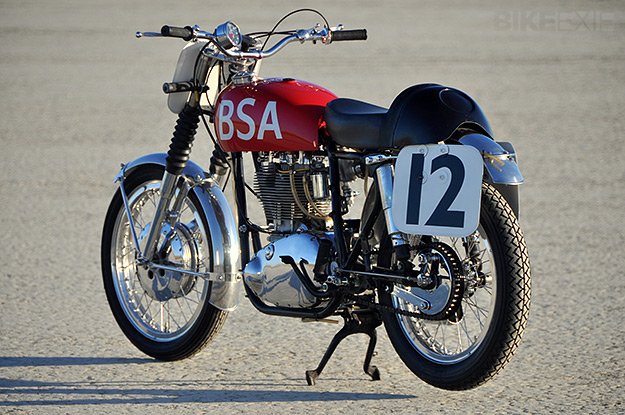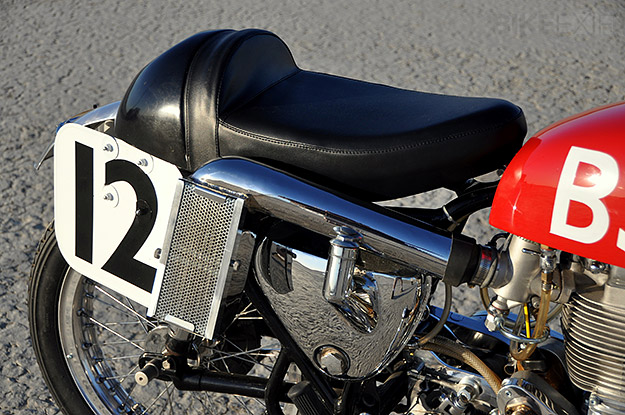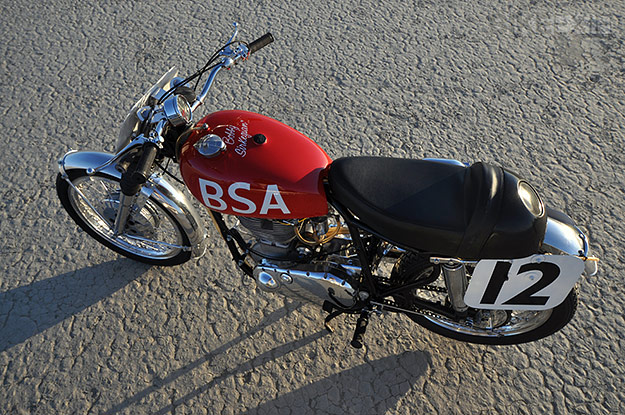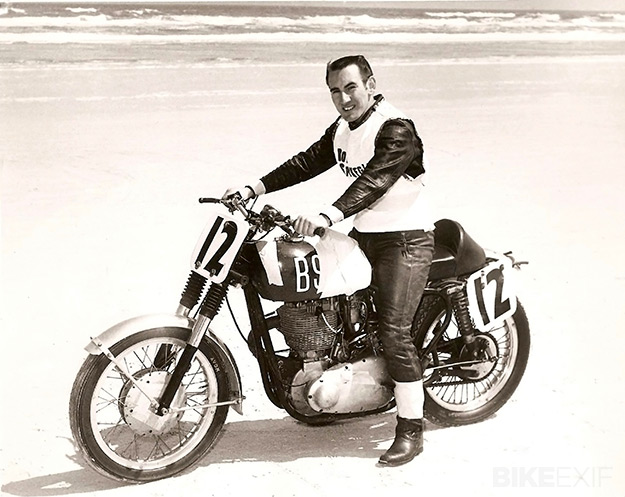
From David Edwards—Last time we saw a Bobby Sirkegian bike on these pages, it was a super-clean Triumph 650 dragster. Now comes his BSA Gold Star Daytona special, last raced by Sirkegian 50 years ago and the subject of a recent full restoration. The Goldie’s history in the Daytona 200 is short but sweet; it ran just three times on the Florida sand, but in each instance it was the best-finishing BSA. In 1957, shipped over from BSA’s “comp shop” and entrusted to rider Al Gunter, it set the fastest qualifying time. And then ran neck-and-neck with the factory Harley-Davidson of eventual winner Joe Leonard, before finishing second following a lengthy refueling stop. By 1958, this Gold Star was in the hands of 18-year-old Sirkegian, the AMA’s top-ranked Novice. Bobby qualified on the front row for Daytona’s Amateur 100-miler, and rode a smart race to finish in fourth place, as the first BSA. The following year Sirkegian bagged a ride on a spare factory Harley—he was now an Expert—but he was back on the Beezer for 1960. This was the last year on the sand for the Daytona 200, before it moved inland to the International Speedway. Unfortunately a suprlus pit stop killed Sirkegian’s chances of a top finish—he arrived home 17th—but he was still the first BSA, behind a slew of Harley KR750s.

After 1960, American roadracers would get increasingly more specialized, sprouting fairings, rearsets and clip-ons. Sirkegian’s BSA, used for roadraces, TTs and, of course, Daytona, was based on a stock Gold Star. It had a slightly larger gas tank holding 5½ gallons, enough to give a 100 mile range so the 200 could be accomplished on just one pit stop. Up front, an optional full-width 190mm brake slowed the BSA from its 125-mph top speed on Daytona’s paved back straight. A set of heavy-duty Girling shocks (originally intended for sidecar use) dealt with the track’s sandy, rutted corners. The motor was largely as delivered from BSA, with S&W springs installed to combat valve float at the 7000 rpm redline. A special RRT2 close-ratio gearbox meant the engine could be kept on the boil into and out of turns. The most important addition was a special Daytona air-intake system that placed the filter near the right rear shock, where it was shielded from sand spray by the rider’s leg.

Last raced at the Ascot TT in 1960, the Gold Star remained in Sirkegian’s garage all these years, though parts went missing and rust had its way. In 2007, he took the old bike out of mothballs and treated it to a better-than-new restoration that took three years. It’s now ready for its next competition when it hits the auction block at the big Bonhams Las Vegas sale the first week in January.









No comments:
Post a Comment